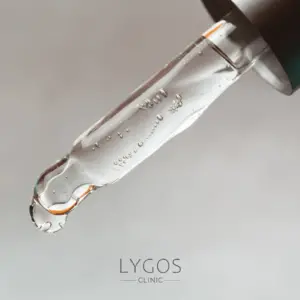Skin Cancer Treatment
Skin cancer is most commonly caused by excessive exposure to ultraviolet (UV) radiation from the sun. It develops due to abnormal and uncontrolled growth of skin cells. As one of the most prevalent types of cancer worldwide, skin cancer includes several forms, the most serious of which is melanoma. Symptoms may include newly appearing or changing moles, skin peeling, bleeding lesions, or wounds that do not heal. There are three main types of skin cancer: basal cell carcinoma (BCC), squamous cell carcinoma (SCC), and melanoma. Although a cancer diagnosis can be overwhelming, it’s important to remember that skin cancer is often treatable, especially when detected early.
Chose Your Topic
Get in Touch
Get professional treatments in Turkey at Lygos Clinic, offering effective, affordable treatments for a healthier and more aesthetically pleasing life.
You can contact us via WhatsApp and Instagram for a quick response.

What is Skin Cancer?
Skin cancer is a disease caused by the uncontrolled growth of abnormal skin cells, often due to DNA damage from UV radiation. Melanin, the pigment responsible for skin color, is produced by melanocytes. When these cells grow abnormally and divide uncontrollably, skin cancer—particularly melanoma—can occur.
The three major types of skin cancer are:
- Basal Cell Carcinoma (BCC)
- Squamous Cell Carcinoma (SCC)
- Melanoma
Each type varies in severity, behavior, and treatment approach, but early diagnosis significantly improves outcomes across all types.
What are the Symptoms of Skin Cancer?
Skin cancer presents with a variety of symptoms. One of the first signs is often the appearance of a new spot or a noticeable change in an existing mole. These changes should not be ignored and must be evaluated by a medical professional. Key symptoms include:
- Lesions that grow and swell in the shape of a bump.
- Moles with irregular edges and asymmetrical moles.
- If a person's tissue borders are irregular, bumpy and rough, it may require a check-up.
- Lesions larger than 5 mm in diameter also raise the suspicion of melanoma.
- Brightly colored bumps that appear red or flesh-colored on the skin.
- Swelling under the skin in areas such as the neck, armpits or groin.
- Wounds that cause constant bleeding and do not heal.
- Moles that constantly itch and cause pain.
- Any change in the size, shape or color of the glands can be a sign of skin cancer.
- Feeling tired is among the symptoms of skin cancer, although many people have the same condition.
- Newly formed or discolored moles and lesions on the body are also among the symptoms.
Any noticeable changes to the skin should be promptly assessed, as early diagnosis plays a crucial role in effective treatment.

How to Treat Skin Cancer?
Skin cancer treatment depends on several factors, including the type, location, stage of the cancer, and the patient’s overall health. Common treatment methods include:
- Surgical excision: Removal of the cancerous tissue, often along with a margin of healthy skin.
- Chemotherapy: Used in some cases where cancer has spread or is resistant to other treatments.
- Immunotherapy: Stimulates the immune system to attack cancer cells, often used for advanced melanoma.
- Radiotherapy: Targets cancerous cells with high-energy radiation.
Types of Skin Cancer

Squamous Cell Cancer
Squamous cell cancer occurs in the middle and outer layers of the skin. It usually occurs on the face, scalp, hands and neck that are exposed to sunlight and heat-containing machines such as solarium. There is a higher risk of this condition, especially in people with weak immune systems. In addition, people with a history of skin cancer, fair skin and people over the age of 50 are more likely to develop squamous cell cancer. This type of cancer, which can also be seen after skin diseases, is seen in areas that are not exposed to the sun, such as the genital area, and the symptoms of SCC are similar to those of BCC. Squamous cell carcinoma, also abbreviated as SCC, can spread to internal organs and lymph nodes, so early diagnosis is very important.

Melanoma
The type of cancer caused by malignant proliferation of melanocyte cells is called melanoma. This condition, which occurs in melanocyte cells that give the skin its color, is considered the most dangerous type of skin cancer. If not diagnosed early, there is a risk of spreading to other organs. Apart from sunlight, genetic predisposition can also cause melanoma. This type of cancer, which usually occurs in the form of black or brown spots, can occur in any part of the body. Pink and blue spots are also among the symptoms of melanoma.

Basal Cell Cancer
The type of skin cancer seen in the top layer of the skin is called basal cell cancer. Basal cell cancer, the most common type of skin cancer, occurs mostly in areas exposed to sunlight. This type of cancer, which is more common in men over the age of 50 and fair-skinned people, is characterized by symptoms such as red spots, open wounds and bright blistering. It should be kept in mind that these wounds may cause side effects such as bleeding, crusting and itching.

Skin Cancer Mortality Rate
Of all cancers, skin cancer is the most common type. Due to damage to the DNA structure, an uncontrolled proliferation of cells on the skin surface can occur. The fact that there are 3 different types of skin cancer and the risk rates are not the same also affects mortality rates. It is good news that melanoma, the most dangerous type of skin cancer, is the least common skin cancer.
In addition, the fact that 75 percent of skin cancer mortality is due to melanoma cases shows how risky this type is. As a result, the mortality rate of skin cancer is 1 in every 100 patients. However, the risk of death can be eliminated with early diagnosis and correct treatment.
Skin Cancer Stages
Does Skin Cancer Kill?
Skin cancer, which is one of the most common cancer cases, is not as important as other types. However, this neglect may vary depending on the stage and type of skin cancer. Failure to carry out the necessary treatments and late diagnosis of cancer can make the process difficult. Early diagnosis of the most dangerous type of skin cancer, especially melanoma, plays a critical role.
If the tumor has spread to the lymph and internal organs, treatment can be challenging. It should also be recognized that delayed treatment can lead to death. Therefore, the answer to the question “Does skin cancer kill?” is yes. The fact that 1 out of every 100 patients dies is an example of this question.


Skin Cancer Spots
Things to Consider in Skin Cancer Treatment
The first issue things to consider in skin cancer treatment is early diagnosis of the problem. If the location, growth stage and type of cancer in a patient are determined early, the treatment process will be easier. These symptoms may also cause a change in the treatment plan.
In skin cancer, where more than one treatment method is applied, it is aimed to remove the tumor without any loss of function. For this purpose, another important consideration in the treatment of skin cancer is to determine the right method.
Generally, skin cancer occurs in areas exposed to the sun’s rays and the heat of the solarium. Therefore, attention is also paid to aesthetic appearance in treatments. Choosing the right doctor is one of the most critical details in treatment. Treatment by a physician specialized in the field will give more positive results.


Before and After Skin Cancer
Visible improvements often include the disappearance of suspicious spots, lesions, swelling, and other skin changes. Symptoms such as fatigue and discomfort typically resolve after treatment. Timely medical care significantly improves quality of life and prognosis.
Skin Cancer Treatment Costs
Treatment costs vary based on:
- Type and stage of skin cancer
- Chosen treatment method (e.g., surgery, immunotherapy, chemotherapy)
- Whether multiple sessions or additional therapies are needed
Early-stage cases often require less intensive treatment, resulting in lower costs. For a personalized estimate and detailed guidance, feel free to contact Lygos Clinic’s expert consultants.

Get in Touch
Get professional treatments in Turkey at Lygos Clinic, offering effective, affordable treatments for a healthier and more aesthetically pleasing life.
You can contact us via WhatsApp and Instagram for a quick response.
Frequently Asked Questions About Skin Cancer Treatment
Most skin cancers are highly treatable, especially if detected early. However, melanoma can be fatal if not treated promptly.
Use broad-spectrum sunscreen, avoid tanning beds, wear protective clothing, and monitor your skin regularly for changes.
Excessive UV exposure, fair skin, family history, a weakened immune system, and a history of sunburns or tanning bed use.
Yes, adopting a sun-safe lifestyle, including using sunscreen regularly, wearing protective clothing, seeking shade, and avoiding tanning beds, can help reduce the risk of developing skin cancer.
BLOG

Breast Lump | Types: Benign, Malign and Causes | LYGOS 2025
Breast Lump While cancer stands out as one of the most common health problems today, early diagnosis rates are also

What is Salicylic Acid? | How to Use & Benefits | LYGOS 2025
Salicylic Acid Salicylic acid is a powerful ingredient that is frequently encountered in today’s skin care products and has become

Estrogen Hormone | Effects on the Female Body | LYGOS 2025
Estrogen Hormone As the human body works in harmony with nature’s marvellous balance, hormones play a vital role in this






